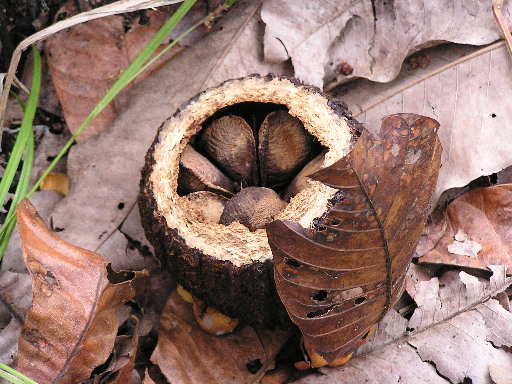The Brazil nut originates from the Brazil nut tree in various parts of South America but is found mainly in Brazil. The use of Brazil nuts for various health and nutritional purposes did not start until the mid to late 20th Century. Today the nut is used in various food recipes, massage therapy, and aromatherapy. It is usually consumed as Brazil nut milk or oil.
Nutritional Benefits of Eating Brazil Nuts:
One of the most exciting discoveries recently made is that taking two Brazil nuts daily can be good for our health, however, its important not to overdue it. Taking one to two Brazil nuts a day is more than enough to meet the daily selenium requirements, a trace element found in very high amounts in Brazil nuts. Selenium plays a very important role in increasing the amount of glutathione peroxidase levels in the body, a potent antioxidant made in the liver.
Besides selenium, Brazil nuts are rich in a many other vitamins, nutrients and minerals. The high levels of palmitoleic acid and oleic acid helps increase levels of “good” or HDL cholesterol. There is also a good amount of Vitamin E, a fat soluble vitamin which is also an antioxidant. Together, selenium and Vitamin E play a big role in boosting immunity and reducing free radical damage. Vitamin E is also great for skin health, so its no wonder many juice and smoothie recipes incorporate Brazil nut milk as an ingredient.
According to a study published in the Journal of Urology, there is evidence that Brazil nuts can reduce the risk of prostate cancer. There are certain theories as to why Brazil nuts may have its anti-cancer effects. The strongest evidence has always been due to the fact that it has one of the highest dietary sources of selenium. Eating Brazil nuts also correlates with a reduction in the risk of breast and prostate cancer, however, the evidence is still inconclusive. Although there is evidence that Brazil nuts can reduce the risk of breast cancer and prostate cancer, more randomized controlled trials need to be carried out before this can be confirmed.
In humans, selenium is not needed in large amounts. It falls into the category of trace element nutrients. Perhaps the anti-cancer properties can be explained by its role in the formation of glutathione peroxidase, an antioxidant made by our liver. Glutathione peroxidase plays a very important role in preventing oxidative damage on DNA. Although oxidative damage affects DNA most of the time, repeated DNA damage increases the risk of getting cancer.
Are there any dangers associated with eating Brazil Nuts?
I know you must be thinking that eating more than two Brazil nuts a day will be much better for our health and increase the levels of antioxidants in our body. But this is absolutely a case where more is not better!
Before you do, I must warn you that eating too many Brazil nuts daily can cause selenium toxicity; side effects can lead to nausea, vomiting and mood swings.
Biology and nutrition aside, how about enjoying a cup of smoothie using Brazil nuts?
I’ll show you how to make a delicious smoothie recipe using the ingredients below!

Ingredients
- 1 cup Brazil-nut milk
- 1 frozen banana, broken into chunks (easier to blend and enhance creaminess)
- 1 cup pitted cherries, fresh or frozen
- 1 tablespoon carob powder
Instructions
- To prepare this smoothie, you will need to gather all the above ingredients and place them into a blender.
- Blend until you get a nice smooth consistency.
- Note: You can also swap carob and mesquite in this recipe
Remember, to enjoy Brazil nuts, you can eat it in many different ways. Another popular way to drink them is to add them into a delicious vegetable juice recipe.
What do you think about Brazil nuts? Have you tried them before?
Bryan writes about almost all things health. His most passionate interests is in the area of diet. He is an advocate for most things natural and believes in less processed and more organic foods. He also writes for <a href=”http://www.jljuicer.com/

Thanks for the info and recipe idea Bryan! I’ve never used brazil nuts in a smoothie but I’m going to try it now 🙂
Sure Jen, Let me know what you think of it!